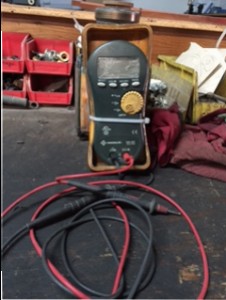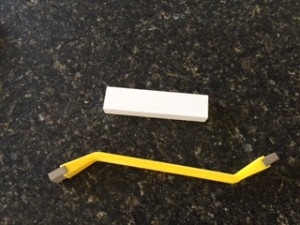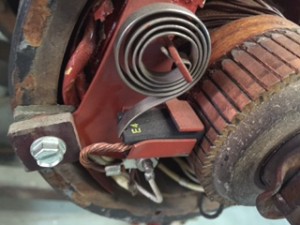USE THIS INFORMATION AT YOUR OWN RISK!
Mountain States Welder Repair, LLC is not responsible for your repair results. If you are not comfortable performing any of the checks and repairs written here, do not attempt them. Also, if you are not genuinely familiar with the use of a Digital Volt Ohm Meter (DVOM) do not attempt the sections of these tips that require one. Instead, bring your welder into our shop to diagnose and repair for you.
Has your Lincoln SA200 stopped welding for no apparent reason?
Here are some simple steps you can take to help troubleshoot the problem.
Check your leads and lead connections. If you’ve put a whip on your stinger lead, be sure to check that too. Make sure your lead connections are clean and tight. Check over the leads themselves for any damage or kinks.
Test the exciter. Plug your grinder into the 115v receptacle and see if it runs at its full potential. Does it spin as usual, or does it take awhile to get up to speed? Does it work at all? If it is working satisfactorily, then the problem is not in your exciter.
Shut down the engine. Remove the exciter brush cover (the small dome sticking out of the front of the machine). Inspect the both exciter brushes. They are the small carbon rectangles with copper wiring connected to them. There is a load spring that keeps the exciter brush pressed to the armature. If the brushes are worn they will allow the load spring to ride on the brush holder instead of the brush If this is the problem, you will need to replace the brushes. Exciter brushes wear out. It is advisable to keep a spare set. If the brushes are long enough, and riding smoothly in the holder then move onto the next step.
Inspect the armature commutators. These are the copper bars that spin and the exciter brushes ride on them. Are they black? Do they look tarnished? Ideally the exciter should be cleaned with a soft Comm Stone. If no stone is available then sand paper will suffice. Use real sand paper and not emery cloth. Emery cloth is coated with a metal oxide and can short your armature. Clean those commutators until you see the copper start to shine. Install the brushes and start the engine.
When the engine is running, it is normal to see some light arcing under one of the brushes. If the arcing is heavy, or the sparks want to follow the armature around then you may have a more serious armature problem.



